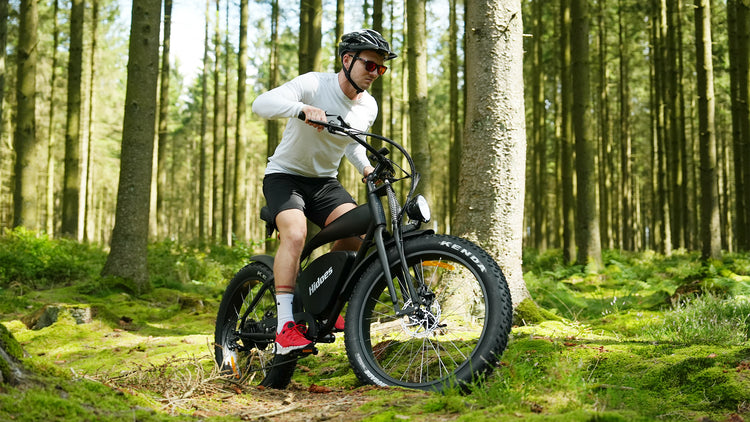
Electric bikes have become a popular mode of transportation and recreation, offering riders the advantage of assisted pedaling. However, as the temperatures drop, many e-bike owners wonder how cold is too cold for their electric bicycles. In this blog post, we'll explore the effects of cold weather on e-bikes and provide some guidelines to help you determine when it might be too cold to safely ride your electric bike.
The Impact of Cold Temperatures on E-Bikes
-
Battery Performance: One of the most significant concerns in cold weather is how it affects your e-bike's battery. Cold temperatures can reduce the overall performance of the battery, decreasing its range and power output. Lithium-ion batteries, which are commonly used in e-bikes, are sensitive to temperature. When it's too cold, the chemical reactions within the battery slow down, leading to a temporary loss of capacity.
-
Tire Grip: Cold weather often comes with icy and slippery road conditions. This can affect the grip and traction of your e-bike's tires. Reduced traction can make it more challenging to control your bike, especially when accelerating, braking, or taking turns.
-
Lubrication and Maintenance: The cold weather can affect the lubricants and moving parts of your e-bike. Lubricants may become thicker, impacting the bike's overall performance. Regular maintenance and lubrication are essential to ensure the bike's smooth operation in cold temperatures.
When Is It Too Cold to Ride Your E-Bike?
-
Freezing Temperatures: Riding your e-bike when temperatures are consistently below freezing (0°C or 32°F) is not ideal. Extreme cold can significantly affect battery performance, and you may notice a reduced range and power output. Additionally, it can be uncomfortable to ride in such conditions.
-
Icy and Slippery Roads: If the roads are covered in snow or ice, it's generally best to avoid riding your e-bike. Reduced traction can lead to accidents and make it challenging to control the bike.
-
Battery Management: Pay close attention to your e-bike's battery. Most e-bike batteries perform best in temperatures between 15°C and 25°C (59°F to 77°F). When it's colder than this, you may experience a noticeable decrease in battery range. Be prepared for shorter trips or carry a spare battery if needed.
Tips for Riding in Cold Weather
If you must ride your e-bike in cold weather, here are some tips to help ensure a safe and enjoyable experience:
-
Dress Appropriately: Wear warm, layered clothing to protect yourself from the cold. Don't forget gloves and a windproof jacket.
-
Tire Choice: Consider using winter tires or tires with good tread for improved grip on icy roads.
-
Regular Maintenance: Keep your e-bike well-maintained and ensure that all moving parts are properly lubricated.
-
Keep the Battery Warm: Store your e-bike and battery indoors when not in use to keep them at a reasonable temperature.
-
Plan Shorter Trips: If you're going for a ride in cold weather, plan shorter trips to avoid running into battery issues.
In conclusion, the question of how cold is too cold for an electric bike largely depends on your comfort level, battery management, and road conditions. While it's generally best to avoid extremely cold and icy weather, with the right precautions and maintenance, you can enjoy your e-bike even in chilly temperatures. Always prioritize safety and make informed decisions based on the specific conditions in your area.






